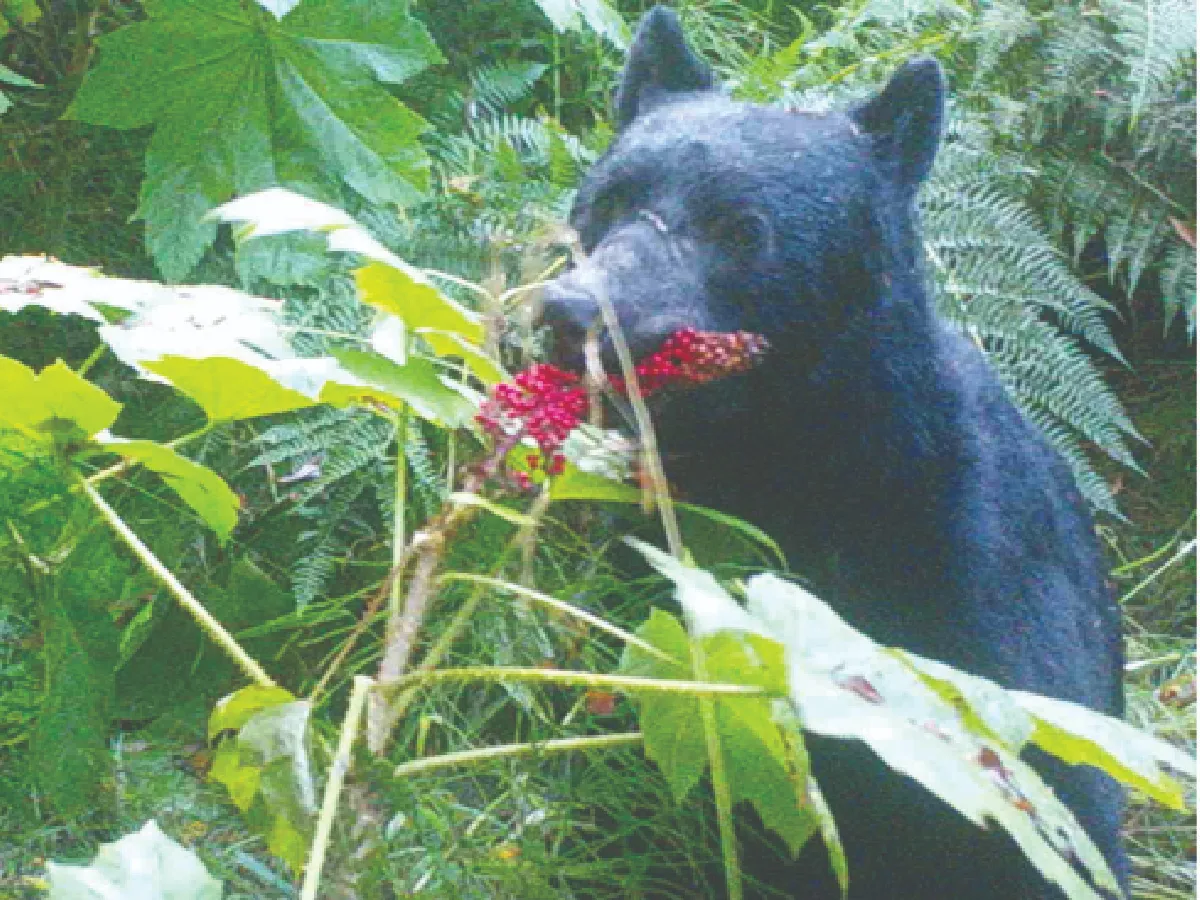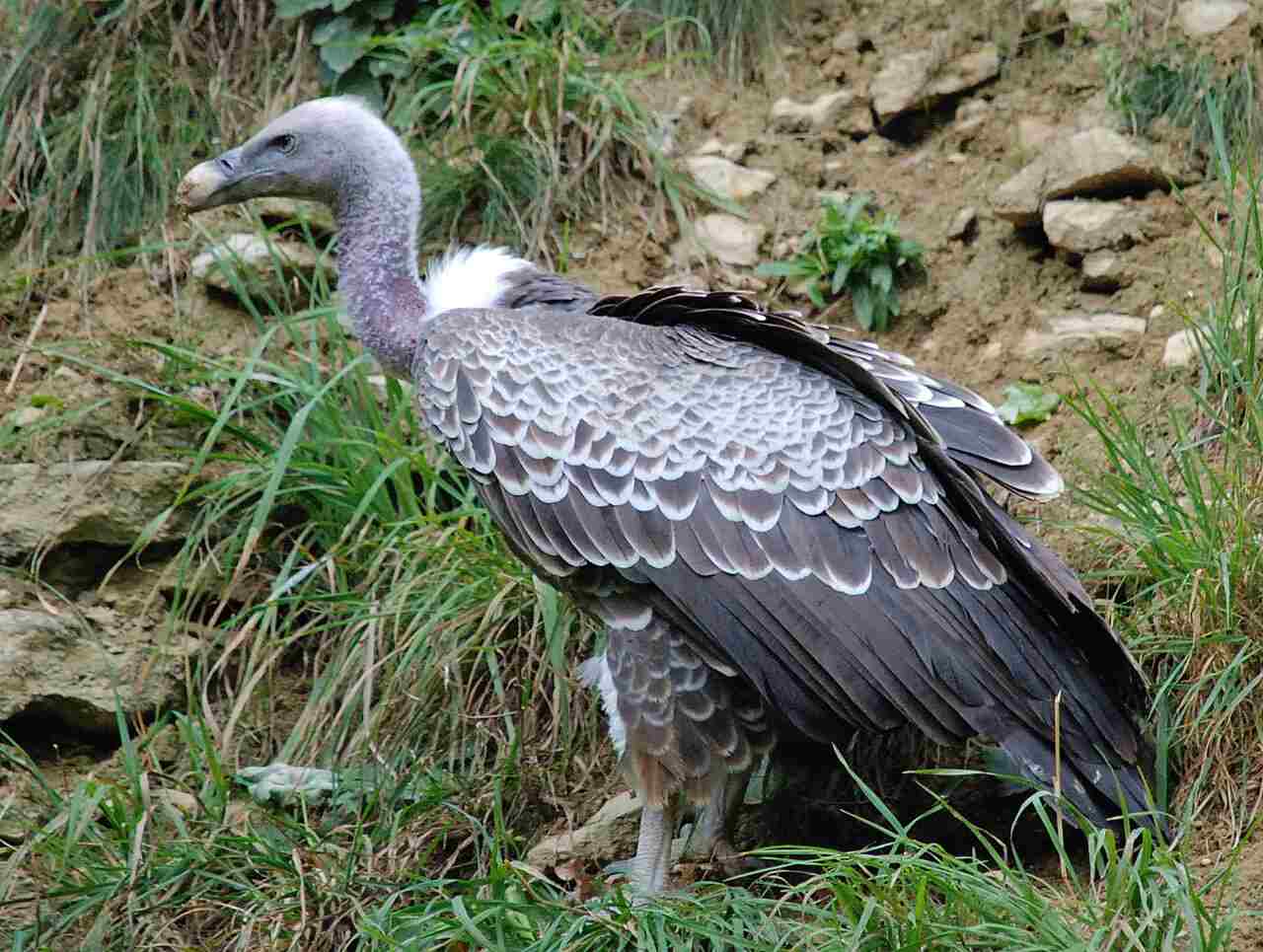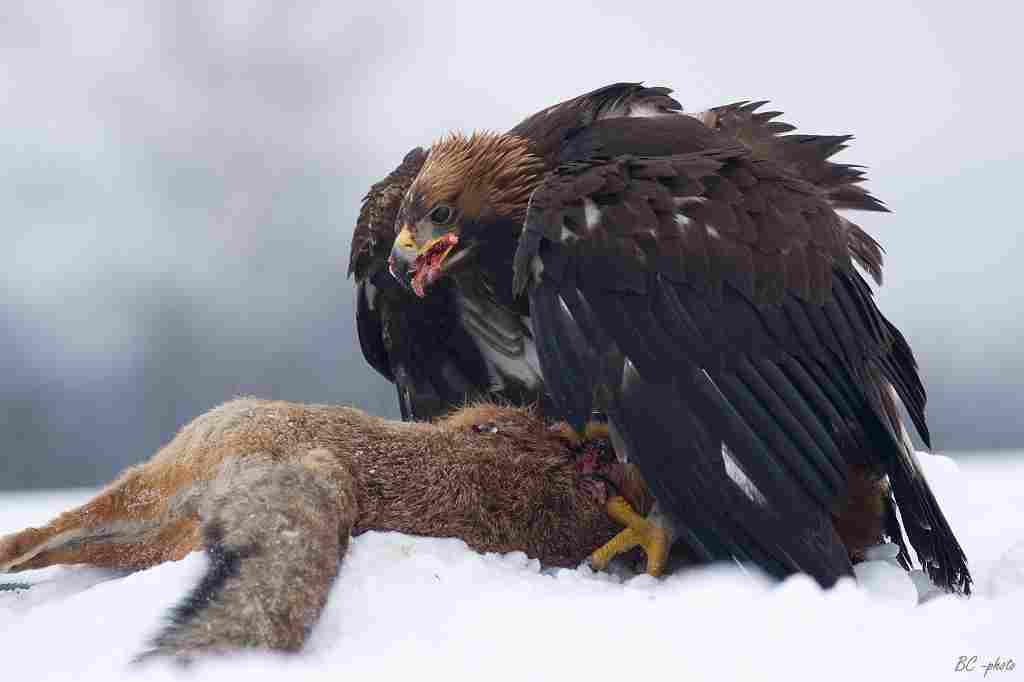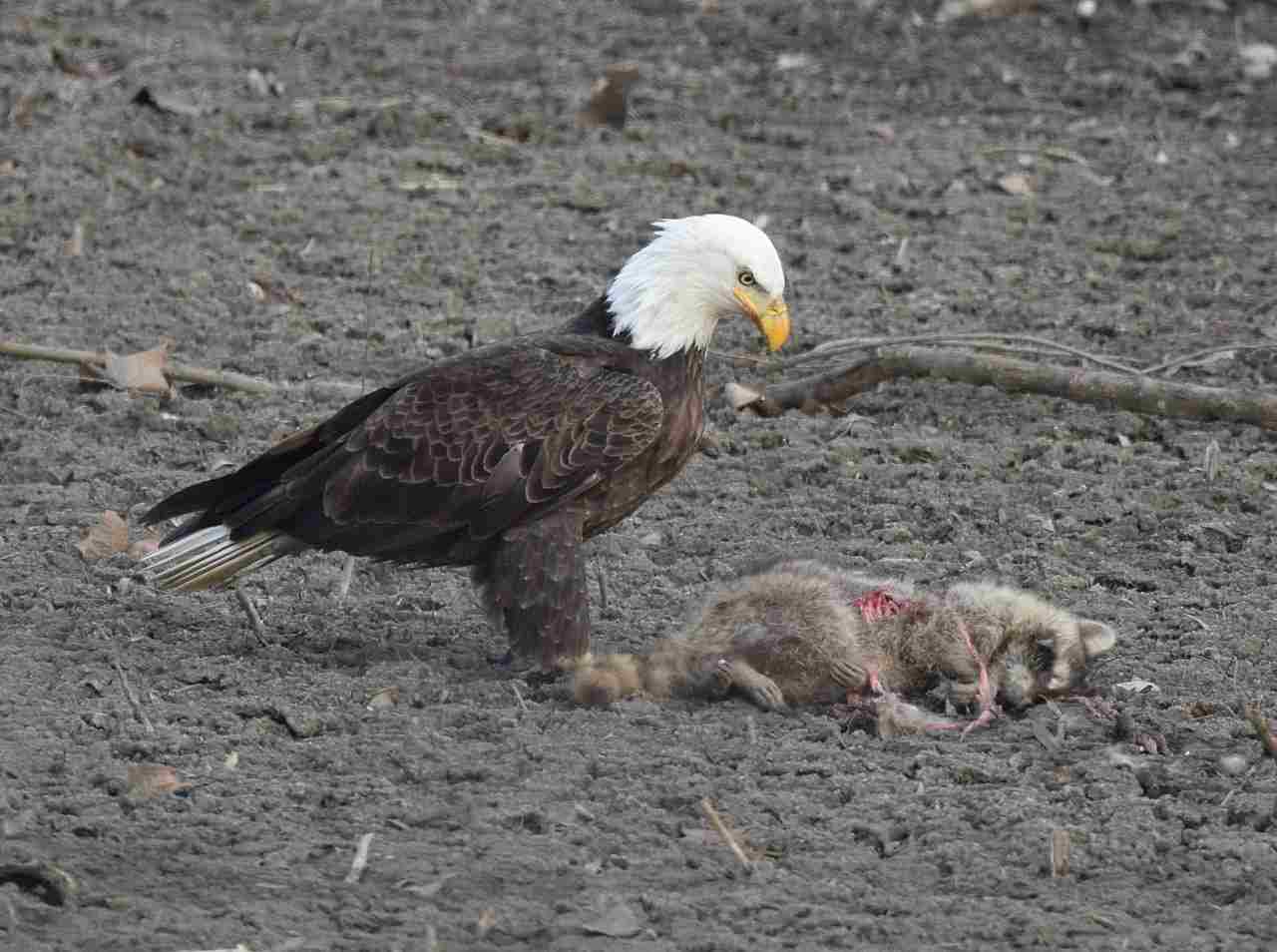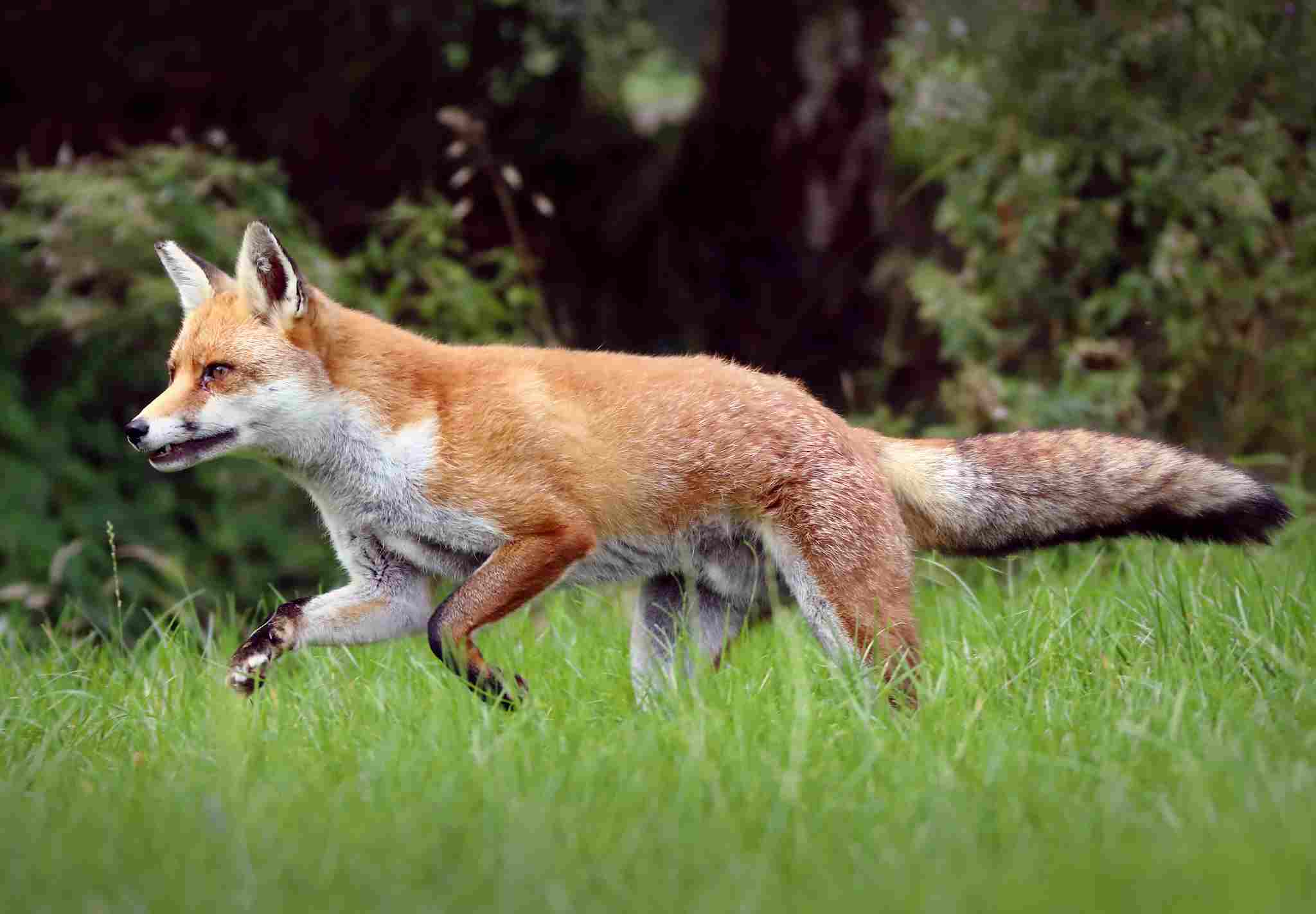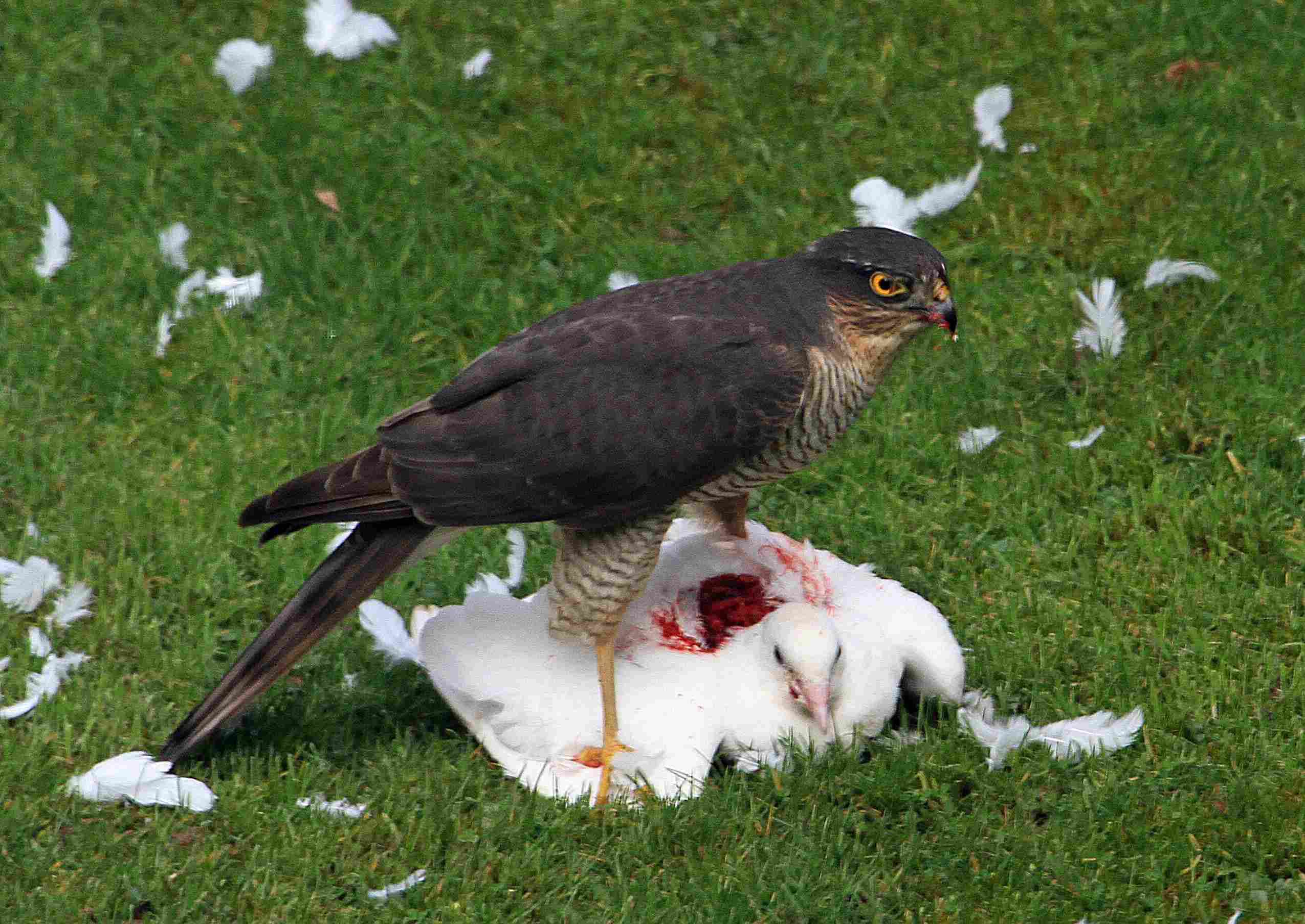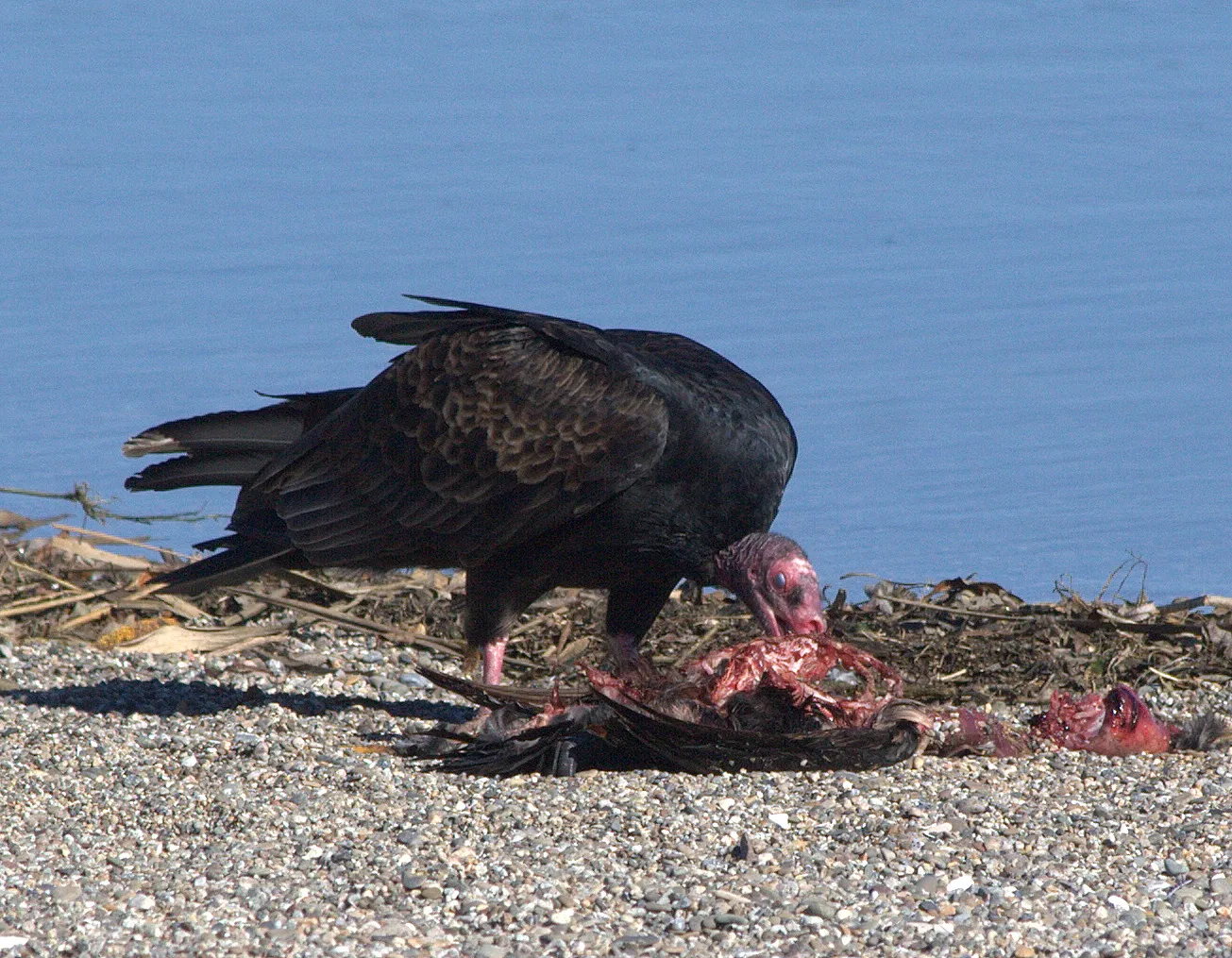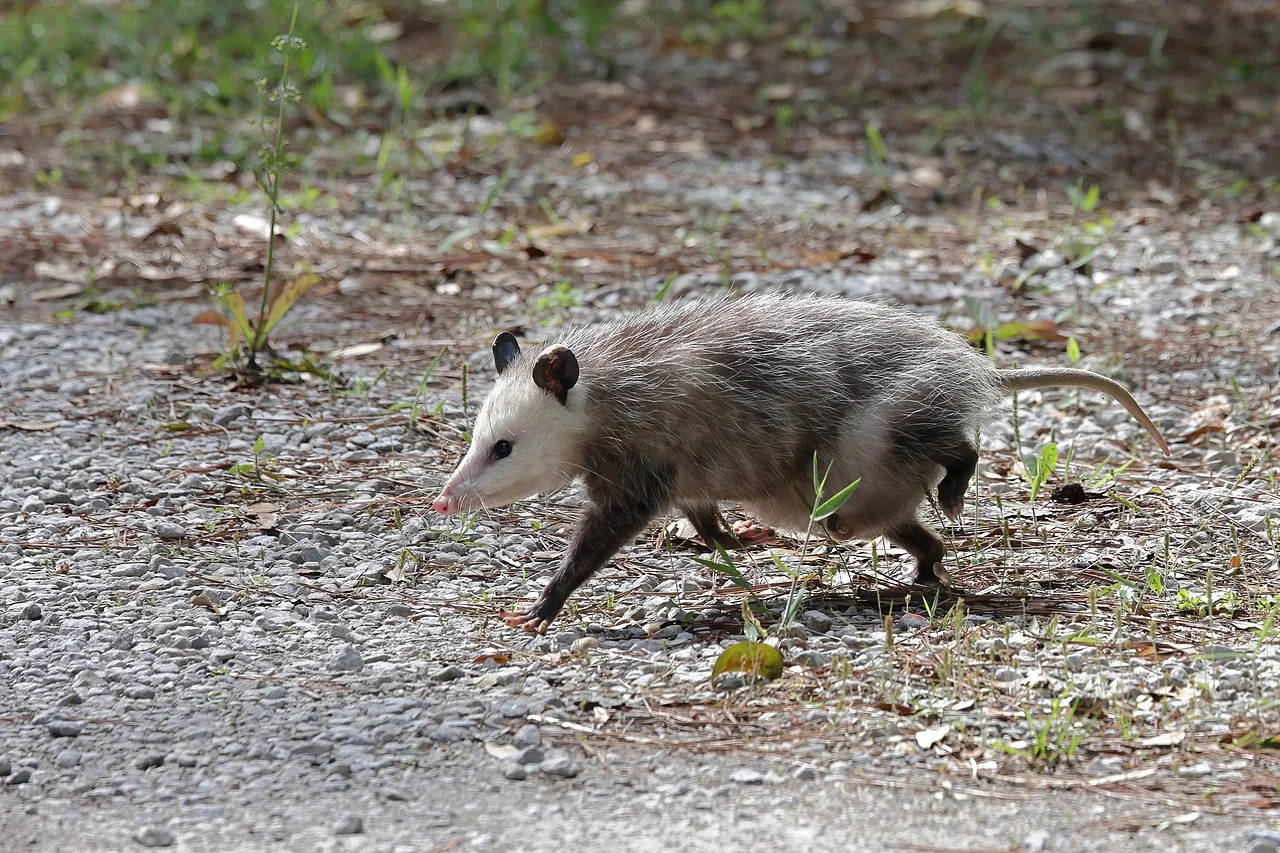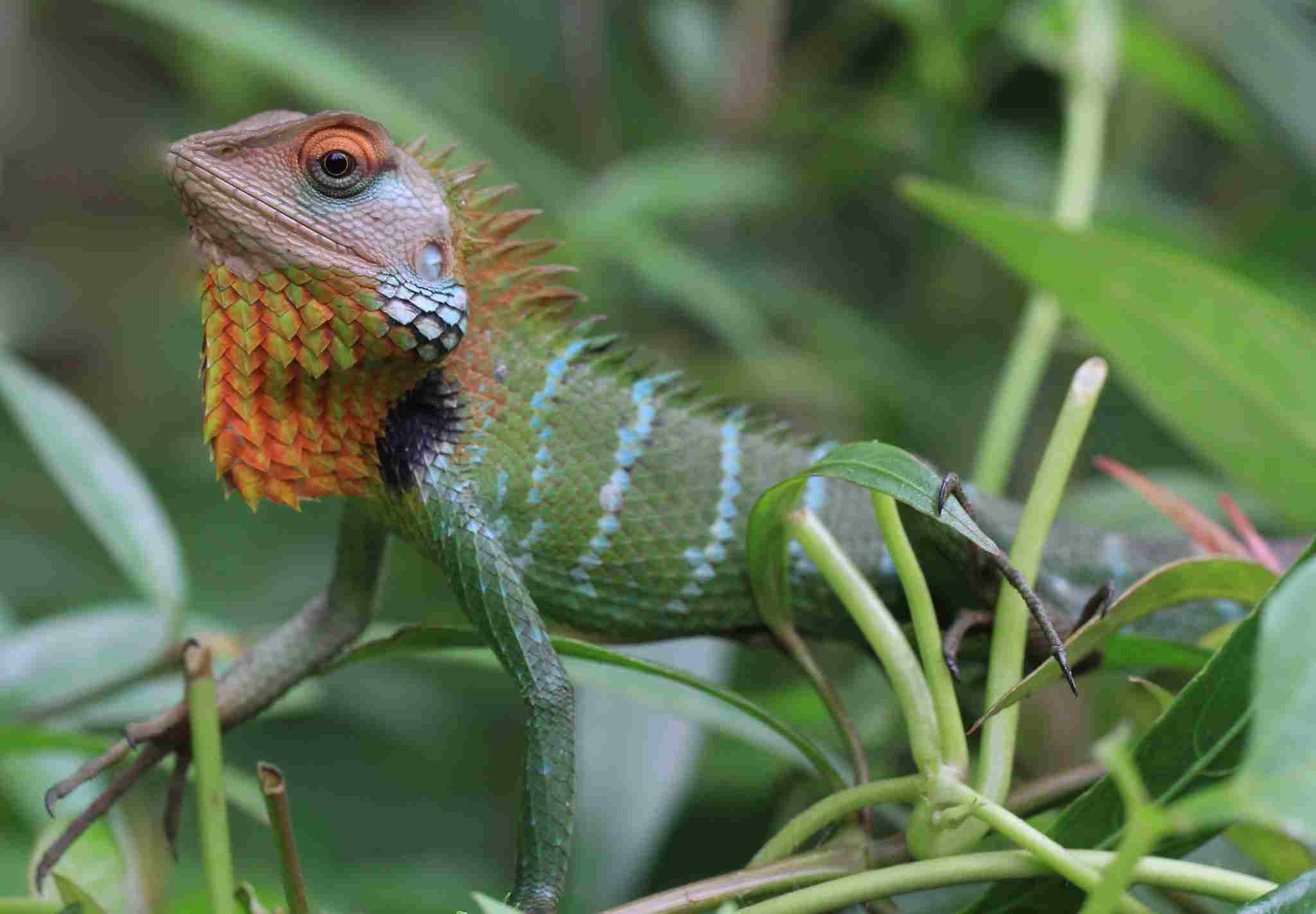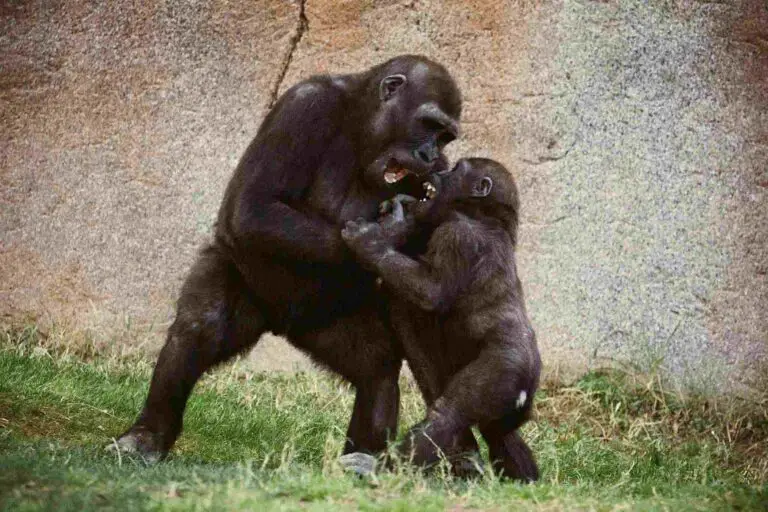9+ Scavengers In The Forest Ecosystem and Their Characteristics
Examples of scavengers in the forest include beetles, crows, foxes, opossums, vultures, eagles, hawks, ocelots, bears, and civets. These animals play a vital role in maintaining the ecosystem’s health by consuming carrion and other organic waste, thus preventing disease spread and supporting nutrient cycling. Scavengers contribute to a cleaner environment, promote biodiversity, and can even aid in seed dispersal. Their adaptive behaviors, whether hunting or scavenging, ensure a balanced and sustainable forest ecosystem.
1. Beetle
Beetles are among the most common and diverse scavengers in forest ecosystems. They play a crucial role in breaking down organic matter, such as fallen leaves, decaying wood, and dead animals. By consuming this material, beetles contribute to the nutrient cycling process, which is vital for maintaining healthy soil and promoting plant growth. These insects come in a wide variety of shapes and sizes, with some species specializing in decomposing specific types of organic matter. Dung beetles, for example, focus on animal feces, helping to recycle nutrients back into the soil.
In addition to their role in decomposition, beetles also serve as a food source for other forest animals. Many birds, reptiles, and small mammals rely on beetles as a key part of their diet. This interaction between beetles and their predators creates a dynamic balance within the forest ecosystem, contributing to overall biodiversity. As scavengers, beetles help to maintain a clean and functioning ecosystem by reducing waste and recycling essential nutrients.
2. Crow
Crows are highly adaptable scavengers found in various forest ecosystems. These intelligent birds are known for their problem-solving skills and complex social structures. As scavengers, crows feed on a wide range of food sources, including carrion, discarded food, and small animals. Their ability to thrive in different environments allows them to play an important role in cleaning up waste and decomposing organic matter in forests. Crows’ scavenging habits not only help reduce the risk of disease but also contribute to nutrient cycling by breaking down organic material.
In addition to their scavenging role, crows are also known for their communication skills, using various vocalizations to coordinate with each other. This social behavior enables them to efficiently find food and alert other crows to potential sources of carrion. As omnivorous scavengers, crows contribute to the stability and cleanliness of forest ecosystems by consuming and recycling a diverse array of organic materials.
3. Fox
Foxes are versatile scavengers that inhabit a wide range of forest environments. While they are primarily known as opportunistic hunters, foxes often scavenge for food, particularly during leaner times when prey is scarce. They are known to eat carrion, discarded food, and other organic materials. This scavenging behavior helps maintain a clean forest ecosystem by reducing the accumulation of dead animals and waste. Foxes’ adaptability allows them to exploit various food sources, which in turn helps them thrive in changing environments.
Foxes play a key role in forest ecosystems by controlling rodent populations and scavenging carrion. Their presence in a forest can contribute to a balanced ecosystem by reducing the spread of disease and preventing overpopulation of certain prey species. By scavenging, foxes also participate in nutrient cycling, breaking down organic matter and returning it to the soil, which benefits plant growth and supports other wildlife.
4. Opossum
Opossums are unique scavengers that play a crucial role in forest ecosystems. As marsupials, they have a distinctive reproductive strategy, carrying and nursing their young in a pouch. Opossums are omnivorous scavengers, feeding on a wide variety of food sources, including carrion, insects, fruits, and small animals. This adaptability allows them to clean up dead animals and organic waste, reducing the risk of disease and promoting a healthier forest environment.
In addition to their role in scavenging, opossums contribute to insect control by feeding on ticks and other parasites. This behavior helps reduce the spread of tick-borne diseases, benefiting both wildlife and humans. As nocturnal creatures, opossums are active at night, scavenging for food and cleaning up the forest floor. Their presence in a forest ecosystem is valuable, as they help maintain ecological balance and promote a cleaner, healthier environment.
5. Vulture
Vultures are critical scavengers in forest ecosystems, known for their specialized role in cleaning up carrion. These birds possess unique adaptations that allow them to consume decaying flesh without getting sick, thanks to their strong stomach acids and immune systems. Vultures help maintain the health of the forest by removing dead animals and preventing the spread of diseases that could result from decomposing carcasses. This scavenging activity also helps control populations of other scavengers and insects that might otherwise proliferate.
Vultures often work in groups, which allows them to efficiently locate and consume large carcasses. Their presence in a forest ecosystem contributes to a cleaner environment and reduces the risk of contamination in water sources due to decomposing animal matter. By recycling nutrients back into the ecosystem through their feeding habits, vultures play a vital role in sustaining forest health and promoting biodiversity.
6. Eagle
Eagles are formidable predators but also play a scavenging role in forest ecosystems, particularly when prey is scarce or during certain times of the year. These birds of prey are opportunistic feeders and will consume carrion when it is available. By scavenging, eagles help remove dead animals from the forest, reducing the risk of disease and supporting nutrient cycling. Eagles are also known to take advantage of leftovers from other predators or scavengers, demonstrating their adaptability in finding food sources.
In addition to their scavenging behavior, eagles are significant predators that help control populations of smaller animals, contributing to the overall balance of the forest ecosystem. Their majestic presence in forests is a symbol of strength, and their role in scavenging contributes to the health and sustainability of the environment. Eagles can be seen soaring over forests, using their keen eyesight to spot potential food sources from great distances, making them efficient scavengers when the opportunity arises.
7. Hawk
Hawks are another group of birds of prey that also exhibit scavenging behavior in forest ecosystems. Although they are primarily hunters, hawks will scavenge when carrion is readily available or when hunting conditions are unfavorable. This behavior allows hawks to contribute to the cleanliness of the forest by removing dead animals and recycling organic matter into the ecosystem. Hawks are known for their sharp talons and keen eyesight, making them effective at finding food from high vantage points.
Scavenging hawks play an important role in maintaining forest health by preventing the buildup of carcasses and reducing the spread of disease. Their ability to adapt to different food sources ensures that they can thrive in various environments. Additionally, hawks help control populations of smaller birds and rodents, providing a balance in the food chain. By scavenging, hawks not only support a cleaner forest ecosystem but also contribute to a dynamic and balanced ecosystem.
8. Ocelot
Ocelots are beautiful and agile wildcats that primarily hunt, but they also engage in scavenging behavior within forest ecosystems. Although these cats are known for their stealth and skill in hunting small mammals, birds, and reptiles, they are opportunistic feeders and will scavenge when presented with carrion or other readily available food sources. This scavenging behavior helps maintain a clean forest environment by removing dead animals and preventing the spread of disease.
As nocturnal creatures, ocelots often operate under the cover of darkness, which allows them to find food with less competition from diurnal scavengers. By scavenging, ocelots contribute to the nutrient cycle in forests, as they help break down organic matter and recycle it back into the ecosystem. Their adaptability to various food sources makes them resilient to changes in prey availability, which in turn supports the stability and diversity of the forest ecosystem.
9. Bear
Bears are omnivorous scavengers that play a significant role in forest ecosystems. While they are capable hunters, bears are also known to scavenge carrion, particularly when other food sources are scarce. Their scavenging behavior contributes to forest cleanliness by removing decomposing organic matter, thereby reducing the risk of disease transmission among wildlife and humans. Bears’ varied diet includes berries, nuts, insects, and fish, but they are not above raiding other animals’ kills or consuming carcasses they encounter in the forest.
Bears’ scavenging habits also impact nutrient cycling within the forest. As they break down organic matter and redistribute it through their foraging and scat, they play a role in seed dispersal and soil enrichment. This activity supports plant growth and contributes to the overall health of the forest ecosystem. Additionally, bears’ scavenging habits can help control populations of smaller scavengers and decomposers, ensuring a balanced ecosystem.
10. Civet
Civets are small, nocturnal mammals found in forest ecosystems, where they play a role as scavengers and opportunistic feeders. Although civets are known for their varied diet, including fruits, insects, and small vertebrates, they are also scavengers, consuming carrion and other organic waste. This scavenging behavior helps clean up forest environments by removing decomposing organic material, which can contribute to the spread of disease. Civets’ adaptability to various food sources makes them essential contributors to forest ecosystem health.
In addition to their scavenging role, civets are important seed dispersers, as they consume fruits and expel seeds in different locations, aiding plant propagation. This behavior contributes to forest regeneration and biodiversity. Civets’ ability to adapt to different diets and scavenge for food helps them thrive in diverse forest environments, ensuring they play a part in maintaining a balanced and clean ecosystem.
*Summary
-
Beetle
-
Contribute to decomposition by consuming fallen leaves, decaying wood, and dead animals.
-
Aid nutrient cycling, supporting plant growth and soil health.
-
Serve as a food source for other forest animals.
-
-
Crow
-
Highly adaptable scavengers, feeding on carrion and discarded food.
-
Play a role in nutrient cycling and cleaning forest ecosystems.
-
Use social behavior and communication to efficiently find food.
-
-
Fox
-
Versatile scavengers that also hunt small mammals.
-
Scavenge carrion, reducing dead animal accumulation and disease spread.
-
Contribute to nutrient cycling and support ecological balance.
-
-
Opossum
-
Marsupials that feed on a variety of organic materials, including carrion and insects.
-
Help reduce the spread of diseases by consuming ticks and other parasites.
-
Contribute to nutrient cycling and forest cleanliness.
-
-
Vulture
-
Specialize in consuming carrion, preventing the spread of disease.
-
Operate in groups to efficiently clean up large carcasses.
-
Contribute to nutrient cycling by recycling organic matter into the ecosystem.
-
-
Eagle
-
Predators that also scavenge when prey is scarce.
-
Help maintain forest health by removing dead animals.
-
Use keen eyesight to find carrion and contribute to nutrient cycling.
-
-
Hawk
-
Primarily hunters but also engage in scavenging when necessary.
-
Contribute to forest cleanliness by removing dead animals.
-
Help control smaller animal populations, supporting ecological balance.
-
-
Ocelot
-
Agile wildcats that scavenge when hunting is not viable.
-
Operate at night, reducing competition with other scavengers.
-
Contribute to nutrient cycling and forest cleanliness.
-
-
Bear
-
Omnivorous scavengers that consume carrion and other organic matter.
-
Help maintain forest health and reduce disease spread.
-
Play a role in seed dispersal and soil enrichment.
-
-
Civet
-
Small, nocturnal scavengers that consume carrion and organic waste.
-
Aid forest regeneration through seed dispersal.
-
Contribute to a clean and balanced forest ecosystem.
-
| Scavenger |
Role in Forest Ecosystem
|
| Beetle |
Decomposition of organic matter, nutrient cycling, food source for other animals
|
| Crow |
Adaptable scavenger, reduces waste, uses social behavior to locate food
|
| Fox |
Versatile scavenger, controls rodent populations, supports ecological balance
|
| Opossum |
Consumes carrion, reduces disease spread, contributes to nutrient cycling
|
| Vulture |
Specializes in carrion consumption, prevents disease spread, nutrient cycling
|
| Eagle |
Predatory scavenger, aids in forest health, uses keen eyesight to find carrion
|
| Hawk |
Hunter and scavenger, removes dead animals, helps control small animal populations
|
| Ocelot |
Agile hunter and scavenger, reduces waste, operates nocturnally
|
| Bear |
Omnivorous scavenger, promotes forest health, plays a role in seed dispersal
|
| Civet |
Nocturnal scavenger, consumes carrion, contributes to seed dispersal and forest cleanliness
|
Related FAQs
FAQ 1: What is the role of scavengers in forest ecosystems? Scavengers help maintain forest ecosystems by consuming dead animals and other organic waste. This process reduces the spread of disease, supports nutrient cycling, and keeps the forest environment clean.
FAQ 2: How do scavengers contribute to nutrient cycling? Scavengers break down organic matter, such as carrion, which helps recycle nutrients back into the soil. This contributes to plant growth and overall ecosystem health.
FAQ 3: Are scavengers only animals that eat carrion? No, scavengers can also consume other types of organic waste, like decaying plant matter, discarded food, or animal feces. Scavengers are broadly defined by their role in cleaning up waste in an ecosystem.
FAQ 4: How do scavengers help prevent disease in forest ecosystems? By consuming carrion and other decaying organic matter, scavengers reduce the potential breeding grounds for pathogens and pests that can cause disease. This helps prevent the spread of infections among wildlife and, in some cases, humans.
FAQ 5: What are some common scavengers found in forest ecosystems? Common forest scavengers include beetles, crows, foxes, opossums, vultures, eagles, hawks, ocelots, bears, and civets. Each of these plays a unique role in maintaining a balanced and healthy ecosystem.
FAQ 6: Are scavengers an essential part of the food chain? Yes, scavengers are critical in the food chain because they help decompose and recycle dead organic matter, allowing nutrients to re-enter the ecosystem. They also serve as food sources for other animals, creating a balanced food web.
FAQ 7: How do scavengers impact biodiversity in forest ecosystems? Scavengers contribute to biodiversity by supporting nutrient cycling, which promotes plant growth and, consequently, supports a wide range of wildlife. Their scavenging activities can also reduce competition among other organisms for resources.
FAQ 8: Can scavengers also be predators? Yes, some scavengers, like eagles, hawks, and foxes, are also predators. These animals have a varied diet and will scavenge when it is advantageous, but they also hunt live prey. This versatility allows them to adapt to different conditions within forest ecosystems.
FAQ 9: Do scavengers interact with each other in forest ecosystems? Yes, scavengers often interact, sometimes cooperatively and other times competitively. For example, vultures may gather around large carcasses, sharing the resource, while other scavengers might compete for smaller food sources.
FAQ 10: What can be done to protect scavengers in forest ecosystems? Protecting scavengers involves preserving their habitats, reducing pollution, and preventing illegal hunting or trapping. By maintaining healthy forest ecosystems, we ensure that scavengers can continue to play their crucial role in the environment.
